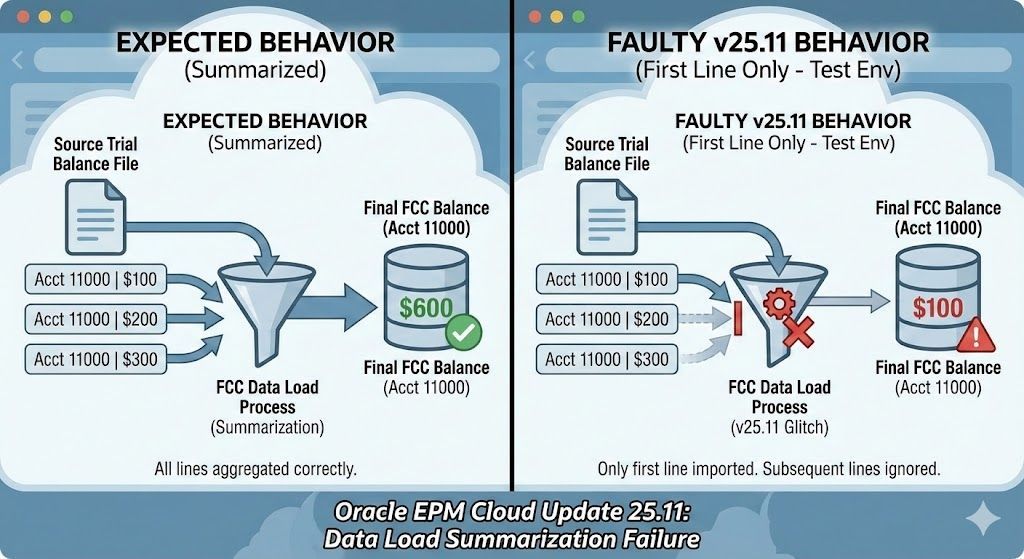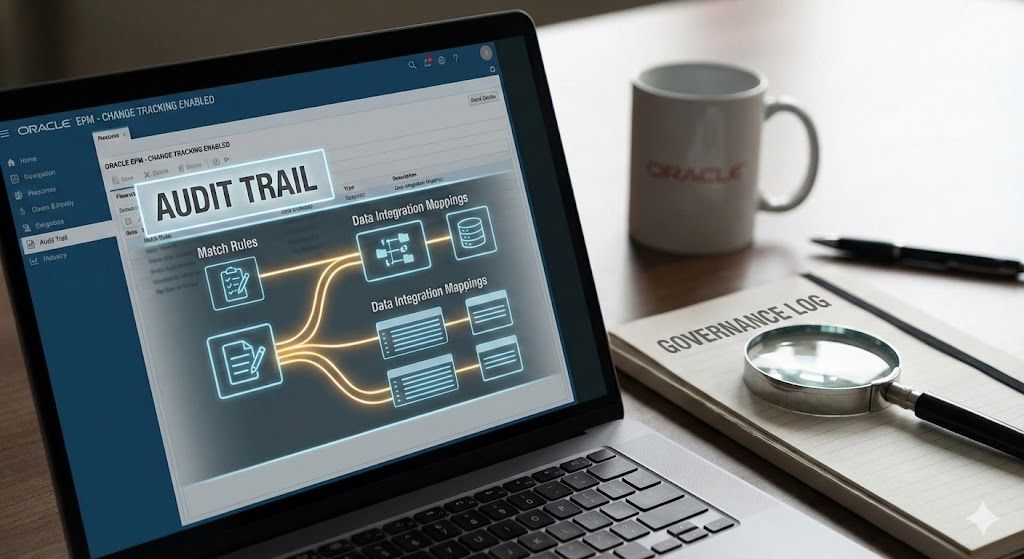Level Up Your Profitability Game: Why Migrating from PCM to EPCM is a Smart Move Now!
Listen to Tresora and Ledgeron's chatting about this blog post:
Harnessing EPCM for Superior Integration, Innovation, and Architectural Advantage.
In today's dynamic business environment, understanding true profitability and managing costs effectively are paramount. For organizations leveraging Oracle's solutions, Profitability and Cost Management (PCM) has been a valuable tool. However, the landscape is evolving, and Oracle's strategic direction is clear: Enterprise Profitability and Cost Management (EPCM) is the future. If you're still on standalone PCM, it's time to seriously consider migrating to EPCM. This isn't just an upgrade; it's a strategic move to unlock enhanced capabilities, ensure long-term innovation, and ultimately, level up your profitability game.
This high-level guide will illuminate why making the switch to EPCM now is a smart business decision.
Seamless Integration: The Power of the EPM Cloud Platform
One of the most compelling reasons to migrate to EPCM is its native integration with the broader Oracle Enterprise Performance Management (EPM) Cloud platform. Think of it as moving from a standalone instrument to a fully orchestrated symphony. EPCM is built on the common EPM Cloud architecture, enabling:
- Seamless Data Flows: Imagine effortless data connectivity with your Planning, Financial Consolidation and Close (FCC), and other EPM Cloud applications. This means more consistent, reliable data across your financial processes, reducing reconciliation headaches and providing a single source of truth.
- Unified Reporting and Modern Dashboards: Leverage the robust reporting capabilities of the EPM Cloud platform. Create comprehensive reports and insightful, modern dashboards that incorporate profitability data alongside your financial and operational metrics for a holistic view of your business performance.
- Consistent Smart View Experience: For users familiar with Smart View for other EPM Cloud modules, EPCM offers a consistent and familiar interface, streamlining user adoption and improving productivity.
Future-Proof Your Investment: Access Ongoing Innovation
Oracle is heavily investing in the EPM Cloud platform, with a continuous stream of innovations and enhancements. By migrating to EPCM, you tap into this ongoing development pipeline. Standalone PCM, on the other hand, is not slated to receive these future updates. Choosing EPCM means:
- Access to the Latest Features: Benefit from the newest functionalities, performance improvements, and advanced analytical capabilities as they are rolled out on the EPM Cloud platform.
- Embrace AI-Powered EPM: Oracle is infusing the EPM Cloud with Artificial Intelligence, including Generative AI and Natural Language Processing. This translates to tangible benefits within EPCM, such as AI-generated insights and automated narrative summaries. The EPM Digital Assistant allows for natural language interaction for various tasks. This focus on AI points towards an increasingly intuitive user experience, with the potential to simplify complex processes, including aspects of rule development and management, making it easier for users to articulate their business logic.
- Staying Ahead of the Curve: Ensure your profitability and cost management processes remain best-in-class, leveraging cutting-edge technologies and methodologies.
- Reduced Risk of Obsolescence: Align with Oracle's strategic roadmap and avoid the risks associated with relying on a solution that will not see significant future development. Oracle's guidance is to move towards EPCM, making migration a proactive step to future-proof your investment.
Enhanced Architecture and Modeling Prowess
EPCM isn't just PCM rehoused in the cloud; it comes with significant architectural and core modeling improvements:
- Improved Architectural Flexibility: EPCM offers greater flexibility, such as the ability to have multiple databases within a single application. This can lead to more tailored and efficient models that better reflect complex business structures.
- Enhanced Core Modeling Capabilities: Benefit from refinements and advancements in the core allocation and modeling engine, allowing for more sophisticated and accurate profitability analysis. This means deeper insights into your cost drivers and profit segments.
The Strategic Imperative: Align with Oracle's Vision
Oracle's strategic direction clearly points towards EPCM as the go-forward solution for profitability and cost management within the EPM Cloud. While existing PCM applications will continue to be supported for a period in line with Oracle's policies, Oracle themselves advise customers to migrate their applications to EPCM to take advantage of the full suite of benefits and future enhancements. Procrastinating this move could mean missing out on critical advancements and potentially facing a more challenging migration down the line.
Make the Smart Move NOW!
Migrating from PCM to EPCM is more than just a technical upgrade; it's a strategic business decision that can significantly enhance your organization's ability to understand and manage profitability. The benefits of seamless EPM Cloud integration, access to continuous innovation (including powerful AI advancements), improved architectural flexibility, enhanced modeling capabilities, and alignment with Oracle's strategic direction make a compelling case for making this move sooner rather than later.
Don't let your profitability and cost management capabilities stagnate. Level up your game by embracing the future with Oracle EPCM. Start planning your migration today and unlock a new era of financial insight and control.






